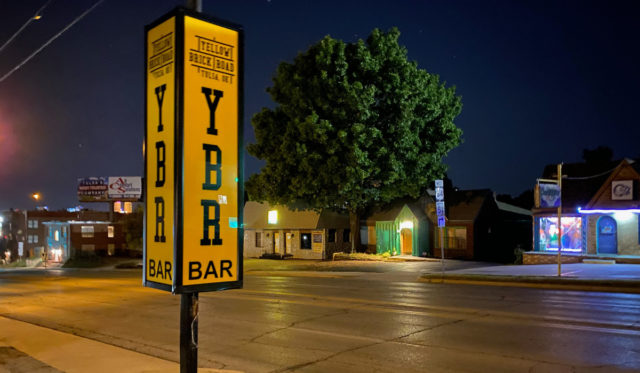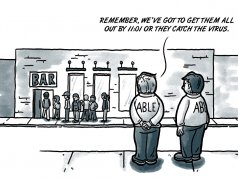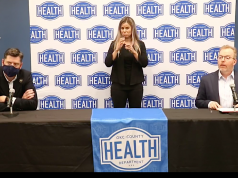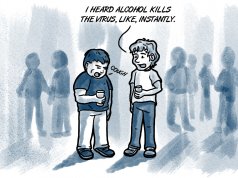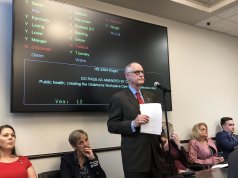
TULSA — In many ways, the Yellow Brick Road Pub on 15th Street feels like any other dive bar. Lit with neon lights, the bar has a jukebox and two pool tables in the back. Above the bartender, a disco ball hangs from the ceiling, and the scents of smoke and beer hang in the air.
At first glance, there’s not much indication the holds special cultural significance — just a rainbow flag in the front window and a few rainbow-colored wall decorations.
But, in fact, Yellow Brick Road Pub is Tulsa’s only lesbian bar and one of three lesbian bars in the state of Oklahoma. The other two, Frankie’s and Alibis, are in Oklahoma City.
According to the Lesbian Bar Project, 21 traditionally lesbian bars remain in the U.S., and the only other state with three such establishments is New York. California and Texas have two each. Ten states and Washington D.C. have one bar, and the remainder have none.
A campaign created to support and preserve these endangered institutions, the Lesbian Bar Project launched in October 2020, releasing a 20-minute documentary in June.
“We define lesbian bars as a space for all marginalized genders within the LGBTQIA community,” Lesbian Bar Project co-director Erica Rose said. “That’s all queer women (cisgender and transwomen), nonbinary people and trans men.”
In a 2019 study, sociologist Greggor Mattson estimated that 200 lesbian bars existed across the country in the 1980s. Oklahoma had four bars during those years. While the overall number has not changed significantly, the state’s lesbian bars have not been stable institutions. None of those four establishments from the 1980s exists today.
“The (queer) women in Oklahoma City — or the state of Oklahoma, period — are really running out of places to go and just be able to relax and be themselves,” said Tracey Harris, the owner of Frankie’s on Northwest 36th Street in OKC.
To their loyal patrons, however, the state’s three lesbian bars are spaces to relax, meet other queer people and express themselves. They provide a social haven difficult to find elsewhere.
Disappearing spaces
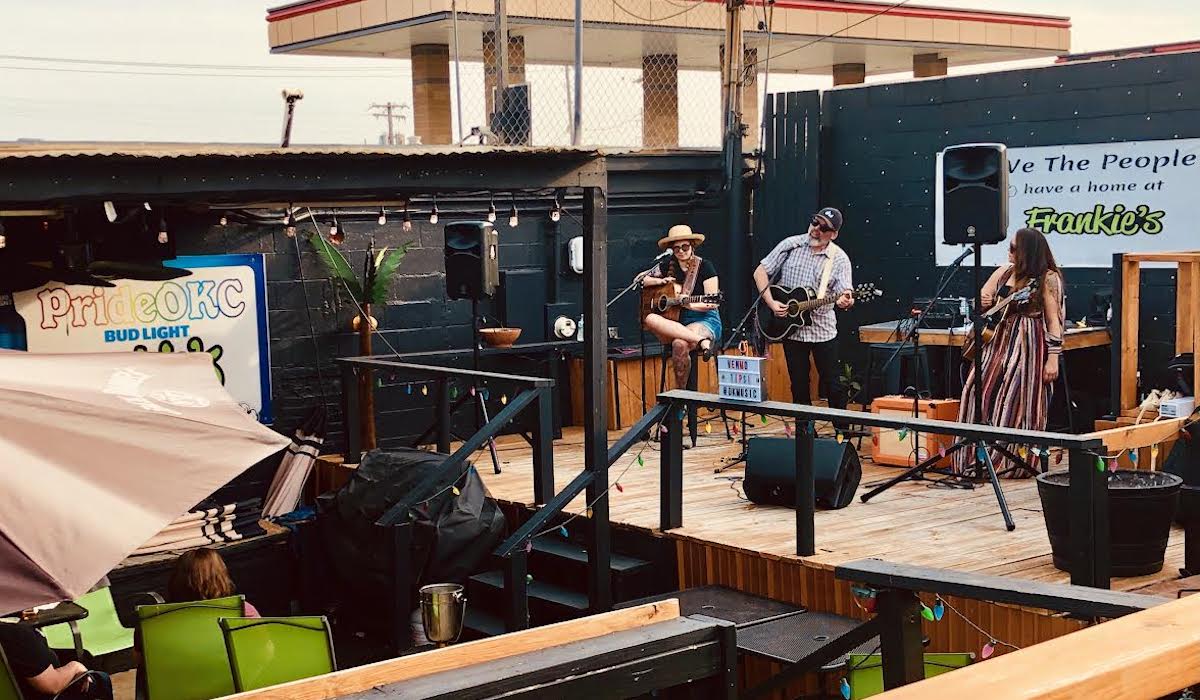
When asked why Oklahoma might have such a comparatively high number of lesbian bars, Mattson said, “I wish I knew.”
Japonica Brown-Saracino, a sociologist who has studied queer communities in small cities, said a number of factors can influence how lesbian identity, culture and organization manifest in different settings. A community’s sense of safety and acceptance, the size and range of the local LGBTQ population and local place narratives can all have an impact.
“I came to conclude that very subtle differences in local ecology (…) helped to direct how LBQ+ individuals understood themselves and related to one another,” she said.
There have always been fewer lesbian bars than gay bars. However, Mattson’s research reported that while all LGBTQ bars declined from 2007 to 2019, those predominately serving lesbians and people of color decreased at higher rates.
Rose and the Lesbian Bar Project cited a variety of potential factors, such as gentrification, the emergence of queer dating apps and online spaces and the increasing acceptance of LGBTQ people, which may make queer-specific spaces feel less vital.
“There is generally more queer acceptance in liberal states,” Rose told NonDoc. “I can, for example, go down the street to any bar that doesn’t necessarily identify one way or the other, and I could feel safe — and that’s a luxury. I think that’s not true of a lot of states.”
The Pew Research Center found that the percentage of Oklahomans who indicated homosexuality should be accepted rose from 38 percent to 53 percent between 2007 to 2014. Nationally, the number rose from 50 percent to 62 percent.
While social attitudes have improved, Harris said going to non-lesbian bars and restaurants in Oklahoma can sometimes still be uncomfortable. Harris, who is 62 and an Oklahoma native, bought a former lesbian bar in 2017 and created Frankie’s with her wife, Ann.
“I get all kinds of crappy remarks and side glances. Sometimes, if they’re aggressive enough, it scares me,” Harris said. “So to have a place where people can come and none of that’s going to happen — it means everything.”
Dating apps offer queer people a place to meet online, which has made it harder for lesbian bars to stay in business.
Yellow Brick Road Pub patron Mandii Larsen said that, for her, dating apps and social media can’t replace offline lesbian gathering places.
“I learn about myself when interacting with other people,” Larsen said. “That’s really important for me to be able to hold a conversation with a complete stranger in person. In-person conversations are important to hang onto, because there is all this social media and texting. We lose this sense of tangible tone.”
Larsen also values the unintentional social encounters that happen in bars.
“I could be stressed out, not want to make any plans and show up, and four, five people that I know and love will be here,” Larsen said. “It feels really unintentionally curated here and [has] a family vibe.”
‘There’s a place for us’
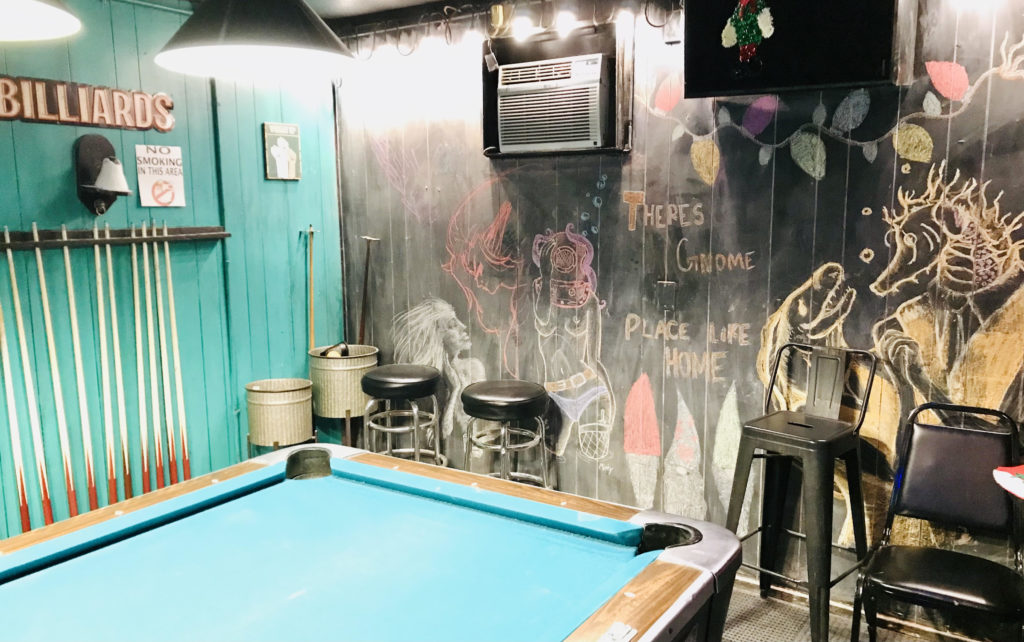
In Oklahoma — as with the rest of the country — there continue to be more bars catered to gay and bisexual men than to queer women and nonbinary people, though gay bars have also been hurt by the pandemic. Oklahoma City and Tulsa are home to at least nine gay bars and clubs.
Harris said that, when she was younger, the LGBTQ culture preferred separate spaces for queer men and women, which she said remain true to an extent.
“(Gay) men tend to want their space for men,” she said. “Their goals are different — and that’s OK. There’s a place for us.”
Harris said her patrons come from across the LGBTQ community and include straight allies. According to Mattson, such inclusiveness is common among lesbian bars.
“I would say that, to some degree, this is a survivor’s bias,” Mattson said. “The lesbian bars that didn’t adapt to serving all genders haven’t survived.”
Lesbian bars tend to have less money and perform more care responsibilities for their patrons than their male-focused counterparts, Mattson said.
Larsen and her friend, Bailie Guido, echoed this observation.
“The reason why clubs geared toward gay men are more popular and more successful is because it has this draw from straight people — it’s fun, there’s drag queens, it’s a party, and it’s easier to be infiltrated,” Guido said. “While lesbian bars like (Yellow Brick Road Pub) are dive bars. It doesn’t have that element of glitter.”
Some LGBTQ people are wary of the increasing popularity of gay bars among heterosexual people.
“I don’t love telling people about this bar,” Larsen said of the Yellow Brick Road Pub. “I want it to thrive, I don’t just want a bunch of random people who don’t know the atmosphere coming in and changing stuff. Not adding value to it.
“It’s not like we’re not welcoming to people here, but we have a community, and it’s fun to meet like-minded people here.”
Follow @NonDocMedia on:
The Lesbian Bar Project impact
The Lesbian Bar Project has raised more than $151,500 to help support the country’s 21 remaining lesbian bars — though the money was ultimately between only 15 bars because the owners of the other six wanted the funds to go to businesses that were in greater need than their own.
Each of the three Oklahoma bars will receive $9,400 from these funds, according to Rose.
For Frankie’s, this money means catching up on bills and preparing to move to a new building. Harris said the bar’s community has outgrown its current space.
“We own the (new) building,” Harris said. “We bought the building, so it’s a bigger space. It’s been totally [remodeled] for two years. It’s got (the) most fabulous dressing room for drag queens — they already love coming there. And they feel like it was designed for them, which it was.”
Beyond raising support, Rose said the Lesbian Bar Project’s ultimate message is that people need to support these businesses.
“During the pandemic, we realized that we took some of these spaces for granted,” Rose said. “We need to show up and support the bars in the best way we can.”








